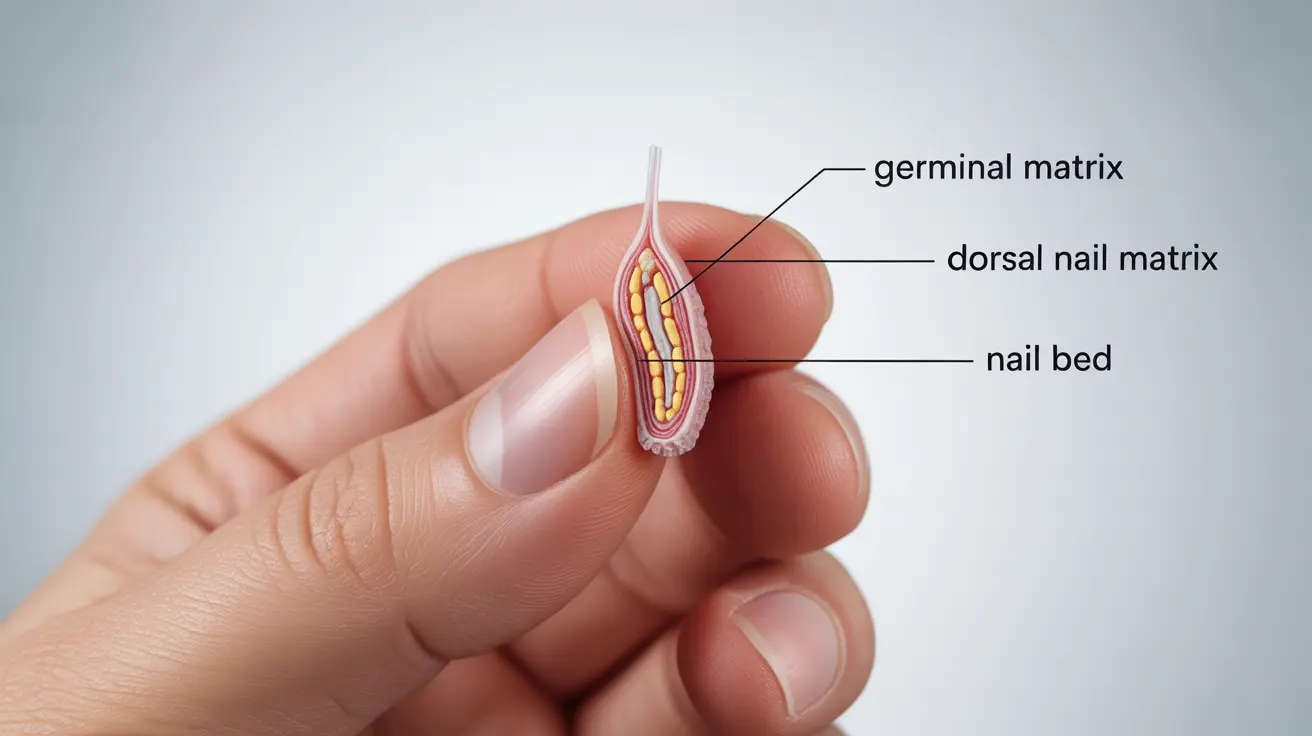The nail matrix, often called the nail root, is a crucial but hidden component of nail anatomy that plays a vital role in nail formation and health. This specialized tissue lies beneath the visible part of your nail and acts as a living factory, continuously producing new nail cells that eventually form the hard, protective nail plate we see on our fingers and toes.
Understanding the nail matrix is essential for maintaining healthy nails and recognizing when problems might arise. Whether you're dealing with nail injuries, disorders, or simply want to better understand nail health, learning about this fundamental structure can help you make informed decisions about nail care and treatment.
The Structure and Function of the Nail Matrix
The nail matrix is a highly organized layer of cells that sits beneath the proximal nail fold, extending from the base of the visible nail to the white half-moon shape (lunula) you might see at the base of your nails. This remarkable tissue contains specialized cells that divide and produce new nail cells through a process called keratinization.
The matrix is responsible for several key functions:
- Producing new nail cells that form the nail plate
- Determining the thickness and shape of the nail
- Contributing to the nail's natural shine and texture
- Providing essential nutrients to the growing nail
The Growth Process
As matrix cells multiply and push forward, they undergo significant changes, becoming flat and hardened through keratinization. This continuous process results in the steady growth of your nails, typically advancing about 3.5 millimeters per month for fingernails and 1.6 millimeters per month for toenails.
Common Nail Matrix Injuries and Damage
The nail matrix is sensitive to injury and can be damaged in several ways:
- Direct trauma from accidents or impacts
- Crushing injuries
- Chemical exposure
- Infections
- Systemic diseases affecting nail growth
- Surgical procedures near the nail
Signs of Matrix Damage
When the nail matrix is injured or damaged, several visible signs may appear:
- Irregular nail growth patterns
- White spots or lines in the nail
- Splitting or separation of the nail plate
- Changes in nail thickness
- Complete nail loss in severe cases
Treatment and Protection of the Nail Matrix
Protecting and treating the nail matrix requires careful attention and appropriate medical care when necessary. Here are key approaches to maintaining matrix health:
Preventive Care
Taking preventive measures can help protect your nail matrix:
- Wearing protective gloves during manual work
- Avoiding harsh chemicals on nails
- Maintaining proper nail hygiene
- Using appropriate nail care tools
- Keeping nails trimmed to prevent injury
Medical Interventions
When matrix damage occurs, several treatment options may be recommended:
- Antibiotics for infections
- Surgical repair for severe trauma
- Protective splinting
- Topical medications
- Professional nail care services
Frequently Asked Questions
What is the nail matrix and how does it contribute to nail growth?
The nail matrix is the living tissue beneath the nail that produces new nail cells. It contributes to nail growth by continuously generating cells that become keratinized and form the visible nail plate. This process determines the thickness, shape, and overall appearance of your nails.
What are common signs and symptoms of nail matrix injury or damage?
Common signs include irregular nail growth, white spots or lines, nail splitting, changes in thickness, and in severe cases, complete nail separation or loss. Pain, swelling, and redness around the nail base may also indicate matrix injury.
How can nail matrix damage affect the appearance and health of fingernails and toenails?
Matrix damage can lead to permanent changes in nail appearance, including ridges, grooves, discoloration, or abnormal growth patterns. The severity of these changes depends on the extent of matrix damage and can affect both nail aesthetics and function.
What treatments and care options are available for repairing a damaged nail matrix?
Treatment options include protective splinting, antibiotics for infections, surgical repair for severe trauma, and specialized nail care procedures. The specific treatment depends on the type and extent of damage.
How long does it take for the nail matrix to heal and nails to regrow after injury?
Healing time varies depending on the severity of the injury. Minor matrix damage may heal within weeks, while complete nail regrowth typically takes 4-6 months for fingernails and 12-18 months for toenails. Some severe injuries may result in permanent changes to nail growth.




